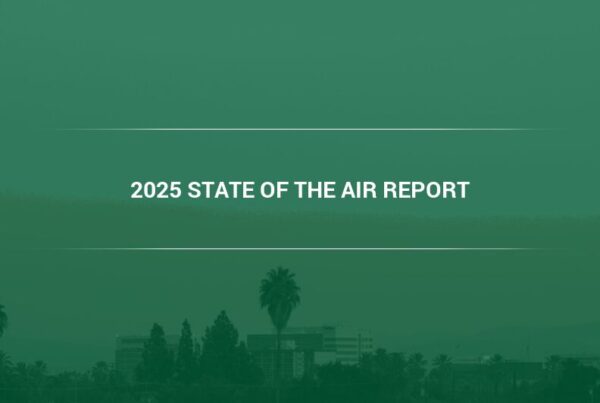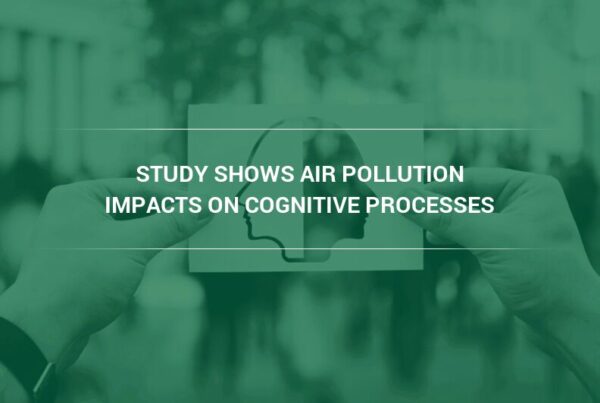More than 45 million people in the United States live, work, or attend school within 300 feet of a major road, airport, or railroad. Air pollution in these areas can be especially high, meaning that people living close to large roads should be even more aware of the impacts of road traffic pollution.
In this article, air pollution experts from Camfil explain the effects of air pollution resulting from excessive traffic in urban areas and the importance of air filtration to address these concerns.
What Air Pollutants Come from Heavy Traffic?
Cars, trucks, and other vehicles emit hundreds of different chemicals into the air, which are found in higher concentrations near major roads. Examples of common pollutants that are directly emitted by automobiles and other vehicles include:
- Particulate matter (PM), also known as particle pollution, is a mixture of airborne particles made up of solid and liquid droplets. By themselves, these particles are so small, they can be seen only with a microscope. In addition to road traffic, particulate matter comes from a variety of sources, such as power plants, construction activities, wood burning, and agricultural burning. Particulate matter can affect health in a number of ways. The smaller the particle, the deeper it can penetrate the lungs, leading to serious health risks such as heart and lung diseases. Long-term exposure to PM can cause asthma, bronchitis, and even premature death. PM can also have a detrimental effect on the environment, as it can cause smog and haze, reduce visibility, and damage crops.
- Carbon monoxide. Carbon monoxide (CO) is a colorless, odorless, and tasteless gas that is released from combustion processes. It is a major component of vehicle exhaust, and can also come from gas or kerosene stoves, portable generators, and other combustion sources. Exposure to high levels of carbon monoxide can cause dizziness, headaches, weakness, confusion, and nausea, and can even be fatal in some cases. Long-term exposure can lead to brain damage, and pregnant women and fetuses are particularly sensitive to its effects.
- Nitrogen oxides. Nitrogen oxides (NOx) are a group of air pollutants that are released into the atmosphere from combustion sources, such as vehicle exhaust, power plants, and industrial activities. These gases react with other pollutants to form dangerous particles, such as ozone, which can lead to respiratory problems and worsen asthma symptoms. NOx can also react with other chemicals in the atmosphere to form acid rain, which can damage crops, buildings, and aquatic life.
- Benzene. Benzene is a component of vehicle exhaust and is a known carcinogen, meaning it can cause cancer. People living near major roads, airports, or railroads are particularly at risk of inhaling benzene in their air. Research has shown that people who are exposed to higher levels of benzene in the air are more likely to have some types of cancers than those who are not exposed.
Motor vehicles additionally release compounds that contribute to the generation of other pollutants in the atmosphere, including nitrogen dioxide, which is present in higher concentrations near main roads, and ozone, which forms further downwind. In addition to emissions from vehicle exhaust and evaporation, traffic on roadways also releases brake and tire particles and can disperse road dust into the air. Collectively and individually, numerous pollutants found in close proximity to roadways have been linked to negative health impacts.
How Does Pollution from Traffic Affect Human Health?
People who live, work, or attend school near major roads have increased rates and increased severity of air pollution-related health problems, including:
- Asthma onset and aggravation
- Cardiovascular disease
- Impaired lung development
- Pre-term birth and low birth weight in infants
- Childhood leukemia
- Premature deaths
Air pollution from traffic is associated with a wide range of adverse effects to human health. Long-term exposure to air pollutants from traffic can cause systemic damage to the body, including damage to the lungs, heart, and immune system. It can also aggravate existing medical conditions like asthma and allergies. Research has linked air pollution from traffic to increased risk of stroke, heart attack, lung cancer, and chronic obstructive pulmonary disease (COPD). Additionally, there is evidence that exposure to air pollution from traffic can cause cognitive impairments in children and adults, including reduced attention, memory, and executive functioning.
Explore some of Camfil’s resources on the health effects of air pollution:
- Air Pollution and Fatal Heart Attack Risk
- Air Pollution and Migraines
- Air Pollution and Antibiotic Resistance
- Air Pollution, Brain Development, and Cognitive Function
- Why Air Filters are Essential in Hospitals and Healthcare Facilities
What Factors Affect Air Pollution Levels Near Major Roads?
According to the EPA, there are many factors that influence the concentration and composition of air pollution in areas adjacent to major roadways:
- The type of vehicles and fuel being used.
- Wind speed and direction.
- Traffic conditions.
- Climate and ground composition.
The highest concentrations of roadway pollutants occur on or just downwind of a roadway. With greater distance from a roadway, concentrations generally decrease to background levels within 500-600 feet. Pollutant concentrations tend to be higher when winds blow from the road and wind speeds are low.
The type of vehicles and fuel used, traffic activity, and the wind speed and direction can all have big effects on pollutant levels near major roadways. Generally, the more traffic, the higher the emissions; however, certain activities like congestion, stop-and-go movement or high-speed operations can increase emissions of certain pollutants. The combination of rush hour and calm winds in the morning often leads to the highest concentrations during this time of the day.
Emissions in close proximity to major roadways may be elevated due to a range of vehicle-related processes, including tailpipe exhaust, fuel evaporation, brake and tire wear, and traffic-induced dust. Concentrations of air pollution can rise under specific wind and terrain conditions, as well as during peak traffic hours. The dispersion of pollutants is influenced by structures such as sound walls, buildings, and vegetation. Generally, pollutant levels tend to decrease as one moves away from traffic, although the extent of this decrease may vary.
Traffic activity, wind speed, and direction can significantly impact pollutant concentrations. Typically, increased traffic results in higher emissions. However, specific factors such as congestion, stop-and-go movement, or high-speed operations can further contribute to the release of certain pollutants. The combination of rush hour and calm winds in the morning often leads to peak concentrations during this time of day. Other factors that influence pollutant concentrations include the composition of vehicles, roadway design, and neighboring land uses.
What About Air Pollution Inside Vehicles?
The quality of air inside a vehicle is affected by nearby vehicles and occasionally by emissions from the vehicle itself. Research typically indicates elevated levels of air pollutants inside vehicles when trailing heavy-duty trucks and cars emitting visible tailpipe emissions. Following closely and stopping too near the vehicle ahead, whether in a traffic jam or at an intersection, can escalate air pollution in the subsequent vehicle. An important determinant of driver and passenger exposure is the ventilation system of the vehicle. Additionally, older diesel-powered buses may exhibit heightened concentrations of exhaust components within the cabin.
The air quality inside vehicles can be adversely affected by traffic emissions on the roadway, resulting in elevated concentrations of pollutants that mirror those present outside the vehicle. Studies consistently indicate higher concentrations of air pollutants in vehicles that are trailing heavy-duty trucks or cars emitting visible tailpipe emissions. Additionally, tailgating and closely following the vehicle ahead during traffic congestion can intensify air pollution in the following vehicle.
The ventilation of a vehicle plays a crucial role in determining the exposure of both drivers and passengers. When windows are open, fresh outdoor air enters the passenger compartment quickly. However, when windows are closed, the vehicle’s ventilation settings have a greater impact on exposure. If the ventilation system is set to bring in outside air, it enters rapidly. On the other hand, the recirculation setting reduces the amount of outdoor air entering the vehicle. In vehicles with properly functioning cabin air filters, recirculation helps reduce particulate matter (PM) concentrations from the outside.
Older diesel buses, including school and public transit buses, may have higher levels of exhaust components inside the cabin. Emissions from the tailpipe and crankcase ventilation can lead to increased concentrations of PM and other air pollutants inside the cabin compared to outside.
What Are the Worst Areas for Traffic-Related Pollution?
Traffic-related air pollution is a major issue in many cities and communities across the globe. With large highways, infrastructure built around cars, and a culture of commuting, the United States is no exception, particularly in large metropolitan areas.
The ten U.S. cities with the worst traffic, based on 2022 data, are:
- Chicago
- Boston
- New York City
- Philadelphia
- Miami
- Los Angeles
- San Francisco
- Washington, D.C.
- Houston
- Atlanta
These cities are all densely populated, with large numbers of people living, working, attending school, or all three, within three hundred feet of heavy traffic, putting them at risk of severe health issues due to pollutant exposure.
Air Purifiers Protect Building Occupants from Traffic-Related Air Pollution
Air purifiers are an important tool for protecting building occupants, tenants, and guests from traffic-related air pollution in buildings located close to busy roads.
Although controlling outdoor air pollution exposure can be challenging, the average American spends over 90% of their time indoors. Surprisingly, indoor air can be up to fifty times more polluted than outdoor air. Therefore, utilizing appropriate air filtration technology is crucial for enhancing indoor air quality and minimizing exposure to harmful air pollutants that can lead to both short- and long-term health consequences.
To ensure optimal protection against harmful pollutants, it is advisable to include a portable room air purifier equipped with both factory-tested and certified HEPA filters, designed to trap particulate matter, as well as activated carbon filters, which effectively eliminate gaseous pollutants like ozone, sulfur dioxide, nitrogen dioxide, and volatile organic compounds. With air purifiers in place, buildings are better protected against the negative impacts of traffic-related air pollution.
Learn more: Camfil’s Medical-Grade City M Air Purifier
About Camfil Clean Air Solutions
For more than half a century, Camfil has been helping people breathe cleaner air. As a leading manufacturer of premium clean air solutions, we provide commercial and industrial systems for air filtration and air pollution control that improve worker and equipment productivity, minimize energy use, and benefit human health and the environment. We firmly believe that the best solutions for our customers are the best solutions for our planet, too. That’s why every step of the way – from design to delivery and across the product life cycle – we consider the impact of what we do on people and on the world around us. Through a fresh approach to problem-solving, innovative design, precise process control, and a strong customer focus we aim to conserve more, use less and find better ways – so we can all breathe easier.
The Camfil Group is headquartered in Stockholm, Sweden, and has 30 manufacturing sites, six R&D centers, local sales offices in 35+ countries, and about 5,600 employees and growing. We proudly serve and support customers in a wide variety of industries and in communities across the world. To discover how Camfil USA can help you to protect people, processes and the environment, visit us at www.camfil.us/
##
Media Contact:
Lynne Laake
Camfil USA Air Filters
T: 888.599.6620
E: Lynne.Laake@camfil.com
F: Friend Camfil USA on Facebook
T: Follow Camfil USA on Twitter
Y: Watch Camfil Videos on YouTube
L: Follow our LinkedIn Page



